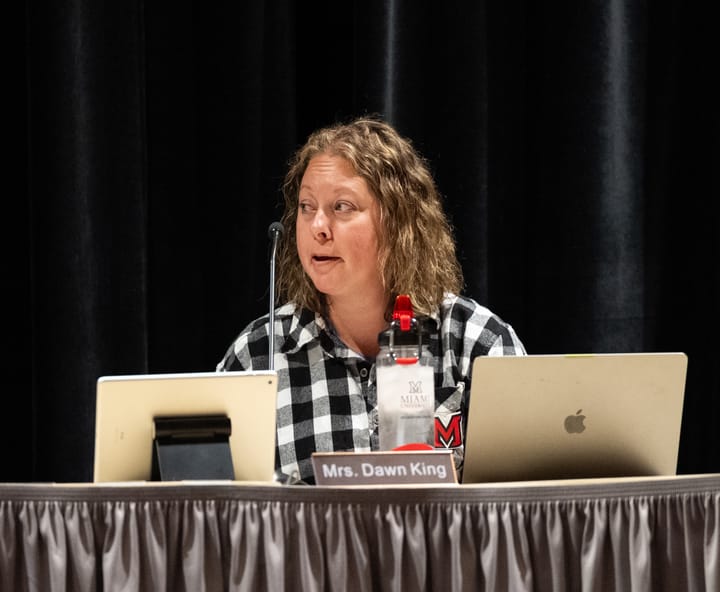Talawanda rearranges money amid state funding uncertainty
The Talawanda Board of Education voted 3-1 to move more than $13 million out of its general fund this week. The moves follow a state proposal that would cap district savings in an attempt to give property tax relief to property owners.

$19 million.
That’s how much the Talawanda School District could stand to lose if a provision of the Ohio State House’s biennial budget limiting public school districts’ cash reserves to 30% of annual operating expenses goes through, Treasurer Shaunna Tafelski said during a Board of Education meeting May 15.
The state budget won’t be signed into law until late June, and plenty of provisions could change before then. During a May 19 special session to review Tafelski’s five-year forecast, she said the district is in a strong financial position, but more than a dozen proposed laws could impact both state and local funding in the next year. The saving cap, if implemented, would only impact the general fund.
The board voted to pass two transfers out of the general fund totalling more than $13 million Monday night. That leaves it with a projected balance of $17.8 million by the end of fiscal year 2025 on June 30, well below the $30.3 million forecast last November but still above the 30% threshold that could soon be established.
Since 2023, state lawmakers have grappled with how to reform property taxes in Ohio after new property valuations led to sharp increases in what people paid across the state. The school district saving cap, proposed by House Republicans, would empower county auditors to return previously collected taxes that push the savings above that threshold to taxpayers. Lawmakers did not specify how this process would be implemented, and some county auditors have cast doubt on how it would work.
During the special session, the board voted 3-1 to move $11.9 million from Talawanda’s general fund to its permanent improvement fund, as well as $1.45 million to a newly established termination benefits fund. Dawn King voted against both transfers and the five-year plan, which she said she was unable to review thoroughly before the meeting.
The $11.9 million has already been allocated to cover the district’s continuous improvement expenses, including the capital improvement plan for buildings and grounds, the curriculum plan for textbook adoption, yearly 1:1 technology purchases and replacement of athletic and band uniforms and equipment. The change will move both the funds and the expenses to the permanent improvement fund, Tafelski said, so while it appears as an expense in the general fund to move the money, it doesn’t impact the district’s overall budget.
Continuous improvements used to be paid out of the permanent improvement fund, Superintendent Ed Theroux said. The district opted to move those expenses to the general fund while constructing Marshall and Kramer Elementaries to give the permanent improvement fund more flexibility. Transferring money back to the general fund would require approval from a court.
“If some catastrophic event happened and we needed some of this money … I would have no problems going to the courts and asking for a transfer back to the general fund,” Tafelski said. “But I really do feel that even with this transfer, we’re in a strong position.”
The board voted last week to establish a termination benefits fund, which will be used to pay out accumulated sick leave and vacation leave to eligible employees when they retire. Right now, 60 district employees are eligible to retire, and Tafelski said she is expecting increased retirements in the coming years. All severance and leave will now be paid from the new fund instead of the general fund.
Both transfers could become yearly, though with significantly lower dollar amounts, if the board decides the new system works well. The annual transfer to the termination benefits fund would cost roughly $125,000, Tafelski estimated, while the transfer to the permanent improvement fund could be $400,000 to $700,000.
Overall, Tafelski said the district’s projected revenues this year are nearly $500,000 higher than forecast in November, with expenditures roughly $170,000 lower than predicted.




